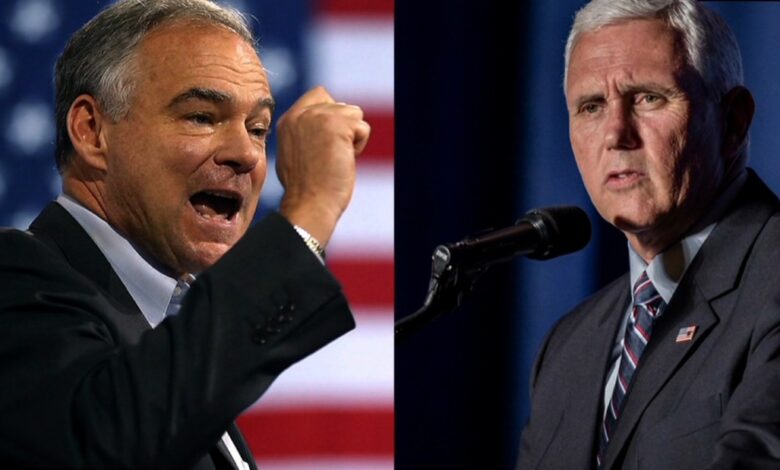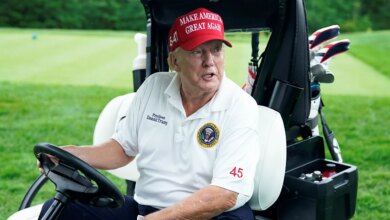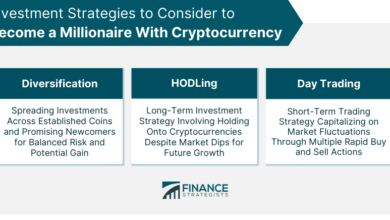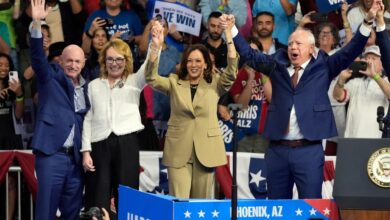
Do Vice Presidential Picks Matter?
Do vice presidential picks matter? Absolutely! While often overshadowed by the presidential candidates, the choice of a running mate can significantly impact an election’s outcome and a presidency’s success. From shaping campaign strategy and appealing to specific demographics, to influencing policy and even potentially succeeding to the highest office, the VP pick is far from a mere formality.
This exploration delves into the historical impact, strategic considerations, and potential consequences of choosing a vice president.
We’ll examine how historical VP selections have affected administrations, both positively and negatively. We’ll also analyze the strategic implications of choosing a running mate who complements the presidential candidate’s strengths, expands their appeal, and potentially sways undecided voters. Finally, we’ll consider the crucial role the VP plays in succession planning and their preparedness to assume the presidency if needed.
Historical Impact of Vice Presidential Choices

The selection of a vice president, often overshadowed by the presidential race, can have profound and lasting consequences on an administration. While the role itself is constitutionally defined, the actual impact of a vice president is heavily dependent on the individual, their relationship with the president, and the circumstances of their time in office. A strong VP can bolster a presidency, while a weak or controversial one can create significant challenges.
The historical record offers numerous examples demonstrating the wide spectrum of influence a vice president can wield. Some have played largely ceremonial roles, while others have become pivotal players in shaping policy and public perception. Understanding these varied impacts provides crucial insight into the complexities of the American executive branch.
Examples of Significant Vice Presidential Impacts, Do vice presidential picks matter
The following table highlights instances where the choice of vice president significantly impacted a presidential administration, both positively and negatively. Note that assessing impact requires considering the complex interplay of various factors, and these are just some prominent examples.
| President | VP Pick | Positive Impact | Negative Impact |
|---|---|---|---|
| Lyndon B. Johnson | Hubert Humphrey | Johnson’s close relationship with Humphrey allowed for effective legislative maneuvering and a smooth transition of power within the administration, particularly on domestic policy initiatives. Humphrey’s experience in the Senate proved invaluable in passing landmark legislation. | Humphrey’s strong liberal stance sometimes clashed with more conservative elements within the Democratic party, potentially hindering the administration’s ability to unify support on certain issues. |
| Richard Nixon | Spiro Agnew | Agnew’s initial appeal to the “silent majority” helped solidify Nixon’s base and bolster his electoral success in 1972. | Agnew’s controversial rhetoric and subsequent indictment for corruption severely damaged the Nixon administration’s credibility and contributed to the Watergate scandal’s fallout. |
| Ronald Reagan | George H.W. Bush | Bush’s foreign policy experience and moderate Republican image helped balance Reagan’s more conservative leanings, broadening the administration’s appeal to a wider range of voters. Bush’s strong relationships within the Republican party also proved beneficial. | While largely a positive relationship, some argue that Bush’s influence on policy was somewhat limited, particularly in the early years of the Reagan administration. |
| Joe Biden | Kamala Harris | Harris’s experience as a prosecutor and senator provided valuable insight into policy discussions, particularly on criminal justice reform and other key areas. Her presence also enhanced the administration’s diversity and appeal to specific voter demographics. | Some critics have argued that Harris’s policy influence has been limited, although this is a matter of ongoing debate and assessment. |
Historically Significant Vice Presidential Roles Beyond Ceremony
The vice presidency has evolved significantly over time. While initially largely ceremonial, many vice presidents have actively shaped policy and the administration’s image through various means.
For example, John Adams, the first vice president, played a crucial role in advising President Washington on foreign policy. Similarly, Dick Cheney, during the George W. Bush administration, was known for his significant influence on national security and foreign policy decisions, exceeding the traditional scope of the vice presidency. This illustrates how the role can expand depending on the president’s delegation of authority and the vice president’s own political acumen and ambition.
Influence of VP’s Policy Positions and Personality
A vice president’s policy positions and personality can significantly influence the overall image and effectiveness of an administration. A VP who holds differing views on key issues can create internal tension and potentially undermine the president’s agenda. Conversely, a VP whose views align closely with the president can strengthen the administration’s message and solidify its base of support.
So, do vice presidential picks really matter? It’s a question that gets debated endlessly, and honestly, the answer is complex. The recent media frenzy surrounding the nbc news reporter not seen on air since paul pelosi attack report retracted highlights how quickly narratives can shift, impacting public perception – and that includes perceptions of political figures.
Ultimately, the VP choice is a crucial strategic move, potentially influencing voter turnout and shaping the future presidency.
For instance, the contrasting personalities and political styles of Al Gore and George W. Bush during their respective vice presidencies under Presidents Clinton and Bush Sr., respectively, highlight the varying degrees of impact a VP can have. Gore, known for his environmental activism, shaped the Clinton administration’s approach to climate change, while Bush’s more moderate approach under his father helped the administration navigate complex political landscapes.
The Role of the VP in Campaign Strategy
The selection of a vice-presidential running mate is a crucial strategic decision for any presidential campaign. It’s not simply about finding a competent individual to fill a potential future role; the VP pick significantly impacts the campaign’s trajectory, shaping its message, broadening its appeal, and potentially influencing the outcome of the election. A well-chosen running mate can offer invaluable political capital, bolstering the presidential candidate’s chances of success.The selection of a running mate can significantly influence a presidential candidate’s ability to reach and resonate with a broader range of voters.
A candidate might choose a running mate to appeal to a specific demographic, geographic region, or ideological wing of the party. For example, selecting a female candidate might attract more women voters, while choosing someone from a swing state could bring additional support from that region. This strategic selection can help to balance the ticket and address potential weaknesses in the presidential candidate’s own profile.
Geographic and Demographic Appeal of VP Choices
Successful campaigns often leverage the VP pick to expand their reach. Consider the 2008 Obama-Biden ticket. Joe Biden, a seasoned senator from Pennsylvania, a crucial swing state, brought valuable experience and credibility to the ticket, particularly appealing to working-class voters and those concerned about foreign policy. This strategic choice helped to solidify support in key regions and counterbalance Obama’s relatively limited experience in national politics.
Conversely, unsuccessful campaigns sometimes fail to recognize the strategic importance of the VP choice. A running mate who lacks broad appeal or whose selection generates controversy can hinder a campaign’s progress and ultimately reduce its chances of winning. The selection of Sarah Palin by John McCain in 2008, for instance, while intended to energize the conservative base, ultimately proved divisive and arguably hurt the ticket’s chances of attracting moderate voters.
Strategic Comparisons of Successful and Unsuccessful VP Selections
Successful presidential campaigns often demonstrate a clear strategy in their VP selections. They identify potential weaknesses in their own candidacy and strategically choose a running mate who can complement their strengths and address those weaknesses. This might involve choosing someone with strong foreign policy experience to balance a candidate with a primarily domestic policy focus, or selecting a more moderate candidate to appeal to a broader electorate.
So, do vice presidential picks really matter? It’s a question I’ve been pondering, especially considering the complexities of foreign policy. For example, the current situation highlighted in this article, antony blinken swoops into a violent hotspot close to home , shows how a VP’s experience in international affairs could be crucial. Ultimately, a strong VP can be a huge asset, influencing critical decisions and potentially stepping into the presidency.
Conversely, unsuccessful campaigns may make choices based on less well-defined strategies. The selection may be driven by internal party politics, personal connections, or an attempt to appease specific factions within the party, rather than a clear-eyed assessment of what the campaign needs to win. This lack of strategic focus can result in a VP pick that doesn’t effectively contribute to the overall campaign effort.
Hypothetical Campaign Strategy: Governor X and Senator Y
Let’s imagine a hypothetical campaign featuring a progressive presidential candidate, Senator Y, who is strong on economic policy but lacks significant foreign policy experience. Their running mate, Governor X, a moderate from a key swing state, possesses extensive experience in international affairs and a strong track record of bipartisan cooperation. The campaign strategy would center on highlighting Governor X’s foreign policy expertise, portraying the ticket as a strong, balanced team capable of addressing both domestic and international challenges.
This would involve dedicated campaign events showcasing Governor X’s qualifications, targeted advertising focusing on their experience and collaborative approach, and strategic media appearances designed to present the ticket as a united front ready to lead the nation. The campaign could use Governor X’s experience to address concerns about Senator Y’s relative lack of experience in foreign policy, building confidence and trust among voters.
The Impact of VP Picks on Voter Turnout and Choice
The selection of a vice presidential running mate is often framed as a strategic move to balance a presidential ticket, but its impact extends far beyond simple political calculation. The VP pick can significantly influence voter turnout and shift voter preferences, potentially determining the outcome of a close election. While the presidential candidate remains the primary focus, the chosen VP can energize specific voter segments or, conversely, alienate them, creating ripples throughout the electorate.The VP pick’s influence on voter behavior is multifaceted.
It can sway undecided voters, reinforce the image of the presidential candidate, and even affect the overall tone and message of the campaign. Understanding this influence requires examining instances where VP choices have demonstrably affected election outcomes.
Examples of VP Picks Influencing Voter Behavior
Several historical examples illustrate the impact of VP picks on voter turnout and choice. The selection of Lyndon B. Johnson as John F. Kennedy’s running mate in 1960 is a prime example. Johnson, a seasoned senator with strong ties to the South, helped to secure crucial Southern votes that were vital to Kennedy’s narrow victory.
His presence on the ticket broadened the appeal of the Democratic ticket, drawing in voters who might have otherwise remained hesitant. Conversely, the selection of Sarah Palin as John McCain’s running mate in 2008 is often cited as a case where the VP pick may have alienated some voters. While she energized a segment of the Republican base, her relatively limited political experience and perceived lack of qualifications led to criticism and arguably dampened enthusiasm among moderate voters.
The resulting impact on the election outcome remains a subject of debate, but it underscores the potential for a VP pick to significantly influence voter perceptions.
Hypothetical Scenario: A Close Election and the VP Pick
Imagine a close presidential election in 2028 between a centrist Democratic candidate and a conservative Republican candidate. Both candidates are relatively well-known, and the polls show a tight race, with a significant number of undecided voters. The Democratic candidate, facing a challenge in appealing to working-class voters in key swing states, chooses a popular, experienced governor from a traditionally Republican state as their running mate.
This VP pick, known for their pragmatic approach and bipartisan appeal, could potentially sway undecided voters who are concerned about the Democratic candidate’s perceived liberal stance. The governor’s presence on the ticket provides a counterbalance, signaling a willingness to work across the aisle and address the concerns of moderate voters. This strategy could energize undecided voters who might otherwise lean towards the Republican candidate but are looking for a more centrist approach to governance.
The resulting increase in voter turnout among these previously undecided voters could prove decisive in a close election. This hypothetical scenario mirrors the strategic thinking behind many VP selections, highlighting the potential impact of a well-chosen running mate in a close race.
Policy and Legislative Influence of the Vice Presidency
![]()
The Vice President’s role in shaping policy and influencing legislation is often underestimated. While the Constitution assigns the VP the largely ceremonial role of President of the Senate, a skilled and politically savvy Vice President can wield considerable power behind the scenes, leveraging their expertise and relationships to impact the presidential agenda and the legislative process. This influence stems from their unique position at the intersection of the executive and legislative branches.A VP’s policy expertise can significantly shape the administration’s agenda.
A Vice President with a deep understanding of a specific policy area, such as healthcare or foreign affairs, can provide invaluable insight and guidance to the President and their cabinet. This expertise can inform the development of policy proposals, ensuring they are both effective and politically feasible. Furthermore, a VP’s legislative experience can be crucial in navigating the complexities of Congress.
Having served in the Senate or House, a VP possesses firsthand knowledge of legislative procedures, the political dynamics of Capitol Hill, and the relationships necessary to build consensus and secure legislative victories.
So, do vice presidential picks really matter? It’s a question that keeps popping up, especially during election season. Sometimes, the impact is surprisingly indirect; for example, consider how seemingly unrelated ecological factors can have huge consequences. I was reading this fascinating article about how bush pigs saved Madagascar’s baobabs , which highlights the unexpected ways seemingly minor players can drastically alter an ecosystem.
Similarly, a VP choice, seemingly minor in the grand scheme, can have unforeseen effects on a presidency and the country’s future. The point is, don’t underestimate the ripple effect!
Examples of VPs Shaping Policy and Legislation
Several Vice Presidents have demonstrably impacted policy and legislation. For instance, Al Gore’s deep involvement in environmental issues during the Clinton administration led to significant advancements in environmental policy. His expertise and advocacy were instrumental in the passage of key environmental legislation. Similarly, Dick Cheney’s extensive experience in government and his close relationship with President George W. Bush allowed him to play a significant role in shaping the administration’s national security and energy policies.
His influence was particularly evident in the aftermath of 9/11, where he played a central role in developing the Bush administration’s response to the terrorist attacks. These examples highlight the potential for a VP to leverage their experience and influence to shape the direction of the country.
The Vice President as a Liaison Between Executive and Legislative Branches
The Vice President’s position uniquely allows them to act as a key liaison between the executive and legislative branches. Their presence in the Senate, coupled with their access to the President and the executive branch, creates an ideal platform for bridging the gap between these two branches of government. A VP can use this position to negotiate compromises, build coalitions, and facilitate the passage of legislation that aligns with the administration’s priorities.
They can act as a trusted intermediary, conveying the President’s message to Congress and bringing the concerns of Congress back to the executive branch. This role is especially critical when dealing with complex and controversial legislation requiring bipartisan support. Effective communication and negotiation are crucial in this context, and a skilled VP can be instrumental in achieving legislative success.
The “Balance” Factor in VP Selection

The choice of a vice presidential running mate is rarely a casual decision. Beyond policy alignment and electability, a crucial factor influencing this selection is the need for “balance” – a strategic pairing that complements the presidential candidate’s strengths and mitigates their perceived weaknesses. This strategic balancing act aims to broaden the appeal of the ticket to a wider range of voters and address potential vulnerabilities.The pursuit of this balance manifests in diverse ways, depending on the presidential candidate’s profile and the prevailing political climate.
Some candidates might prioritize geographic balance, selecting a running mate from a key swing state or a region underrepresented in their own base of support. Others may seek ideological balance, pairing a more moderate candidate with a more progressive or conservative one, depending on their own political leaning. Still others might choose a running mate with complementary policy expertise or experience to bolster their own qualifications.
Geographic Considerations in VP Selection
The geographical diversity of a presidential ticket often plays a significant role in campaign strategy. For instance, a presidential candidate from the Northeast might choose a running mate from the South or West to expand their reach into crucial swing states. The 2008 Obama-Biden ticket exemplifies this approach. Barack Obama, hailing from Illinois, selected Joe Biden from Delaware, a state with a long history of political swing, broadening their appeal to moderate and conservative voters in key battleground states.
This geographic diversification isn’t simply about winning specific states; it’s about projecting an image of national unity and broad appeal. A geographically balanced ticket can signal to voters across the country that the campaign is inclusive and responsive to diverse regional concerns.
Ideological Balancing in Presidential Tickets
Ideological balance, or the perceived lack thereof, can significantly impact voter perception. A candidate perceived as too extreme on a particular issue might choose a running mate with more moderate views to reassure undecided voters. Conversely, a more moderate candidate might select a more progressive or conservative running mate to energize their base and demonstrate a commitment to addressing specific policy concerns.
The 2016 Republican ticket of Donald Trump and Mike Pence offers an interesting example. Trump, known for his populist and nationalist rhetoric, chose Pence, a socially conservative governor, to solidify support among evangelical Christians and other conservative voters who might have been hesitant to embrace Trump’s unconventional style. This pairing aimed to address concerns about Trump’s ideological consistency, offering a counterpoint to his more unpredictable public persona.
Addressing Perceived Shortcomings Through VP Selection
Consider a hypothetical scenario: a presidential candidate is a seasoned legislator with extensive policy expertise but lacks significant executive experience. To counter this perceived weakness, they might choose a running mate with a strong record as a governor or business executive. This running mate wouldn’t necessarily need to possess identical policy views; instead, their executive experience would serve as a complementary asset, reassuring voters that the ticket possesses the necessary skills to manage the complexities of the presidency.
The narrative here isn’t about one candidate covering for another’s incompetence; it’s about creating a balanced and compelling team that showcases a broader range of skills and experience to address the diverse challenges facing the nation. This carefully crafted image of competence, built through the strategic selection of a running mate, can be a powerful tool in swaying undecided voters.
Succession and the VP’s Preparedness: Do Vice Presidential Picks Matter
The vice presidency, while often overshadowed by the presidency, holds a position of immense significance, primarily due to its role in presidential succession. The potential for a vice president to unexpectedly assume the highest office necessitates a thorough evaluation of their preparedness during the selection process. This preparedness extends beyond political acumen and encompasses a broad range of skills and experiences crucial for effective leadership in times of crisis.The selection process for a vice presidential candidate should inherently consider the individual’s readiness for the presidency.
While a candidate’s political alignment and ability to appeal to specific voter demographics are important, the capacity to effectively lead the nation in unforeseen circumstances should be a paramount concern. This involves assessing their understanding of domestic and foreign policy, their experience in crisis management, their ability to work with Congress, and their overall leadership qualities. A robust vetting process, going beyond typical campaign scrutiny, is crucial.
This might include detailed policy briefings, simulations of crisis scenarios, and assessments of their temperament under pressure. The goal isn’t to predict the future, but to ensure the candidate possesses the foundational knowledge, skills, and resilience to navigate the complexities of the presidency.
Assessing a Candidate’s Presidential Readiness
A comprehensive assessment of a VP candidate’s preparedness for the presidency should involve multiple facets. First, their policy expertise needs evaluation. Does the candidate possess a deep understanding of complex issues like national security, the economy, and healthcare? Second, their leadership experience should be examined. Have they held positions of significant responsibility, requiring them to make difficult decisions under pressure, manage teams, and inspire confidence?
Third, their ability to work with diverse groups is crucial. Can they effectively collaborate with members of Congress from opposing parties, build consensus, and navigate political gridlock? Finally, their character and temperament must be carefully considered. Are they calm under pressure, decisive when needed, and able to inspire trust and confidence in the American public? A thorough investigation into these aspects provides a more complete picture of a candidate’s presidential readiness.
A Hypothetical Scenario: Sudden Presidential Succession
Imagine a scenario where the president suffers a sudden, incapacitating illness. The vice president, perhaps unexpectedly chosen for their perceived political balance, is suddenly thrust into the Oval Office. The challenges are immediate and immense. The transition of power requires swift and decisive action, coordinating with the cabinet, Congress, and the intelligence community. Domestically, the VP must address public anxieties, maintain market stability, and manage the ongoing policy agenda.
Internationally, they must reassure allies, maintain diplomatic relations, and address any potential security threats. However, opportunities also arise. The VP might leverage the shock of the situation to push through stalled legislation, introduce much-needed reforms, or reset foreign policy initiatives. The success hinges on their preparedness, their ability to quickly build a strong team, and their capacity to inspire confidence and trust during a period of national uncertainty.
The hypothetical scenario highlights the critical need for thorough assessment of a VP candidate’s capacity to lead the nation under pressure.
Ultimately, the question of whether vice presidential picks matter boils down to a resounding yes. The selection process is a complex balancing act, requiring careful consideration of factors ranging from political strategy and policy expertise to the candidate’s personal qualities and potential for future leadership. Ignoring the significance of this choice can have profound consequences, impacting not only the election itself but also the direction and effectiveness of the subsequent administration.
The VP isn’t just a backup; they’re a crucial part of the team, and their impact can be felt throughout a president’s entire term.





